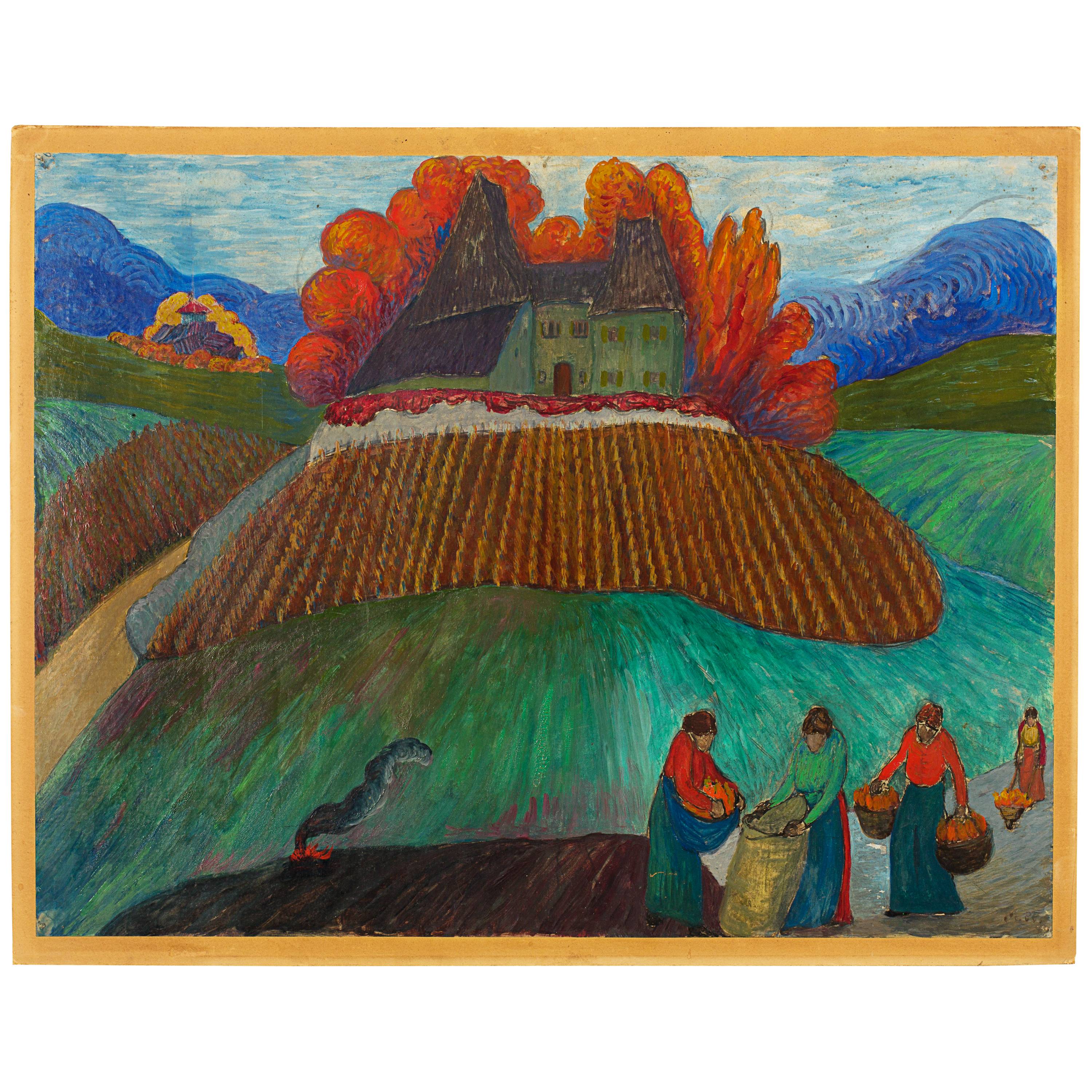- EN
Log in
- Live Auctions
- Past auctions
- More
- Gallery
- Art Dealing
- Publishing
- Kornfeld today
- The Story of Kornfeld
- Information



Tula 1870 - 1938 Ascona
Circa 1915
Oil and tempera on paper, mounted on backing board
46,8x62,2 cm, sheet size
Monogrammed lower right by the artist in brush in brown tempera "M. W."
Collection Martha Steffen, Ascona
Collection P. and D. Jenny-Steffen; through inheritance to
Private collection Switzerland
Ascona 1988, Monte Verità, Museo Communale d'Arte Moderna, Centro Culturale Beato Berno, Marianne Werefkin - Leben und Werk, kuratiert von Bernd Fäthke, cat. no. 73, reprod.
In very nice condition, fresh in colours. In the four corners with small holes, probably from tearing nails, colour losses in the light blue at lower right
Marianne von Werefkin, together with her partner Alexej von Jawlensky, had to emigrate from Munich at the outbreak of the First World War in 1914. They found refuge in Saint-Prex in the estate of the Adèle Delarageaz family. One of Adèle's sisters had already lived in Russia before 1914 and it can be assumed that through her they became acquainted with the fugitives. The present work was written during her stay on Lake Geneva, probably on the occasion of an excursion to Aigle. The impressive castle complex is depicted above the vineyard. In September/October 1917 Werefkin, Jawlensky and their family moved to Zurich before moving to the Castello in Ascona on Lake Maggiore in 1918
The former owner of the present work, Martha Steffen, who also lived in Ascona, developed a close relationship with the artist from around 1925 and repeatedly acquired works to support her at a time of particularly great financial need
Um 1915
Öl und Tempera auf Papier, auf Unterlagekarton aufgezogen
46,8x62,2 cm, Papiergrösse
Unten rechts von der Künstlerin in Pinsel in brauner Tempera monogrammiert "M. W."
Slg. Martha Steffen, Ascona
Slg. P. und D. Jenny-Steffen; durch Erbschaft an
Privatsammlung Schweiz
Ascona 1988, Monte Verità, Museo Communale d'Arte Moderna, Centro Culturale Beato Berno, Marianne Werefkin - Leben und Werk, kuratiert von Bernd Fäthke,
In sehr schöner, farbfrischer Erhaltung. In den vier Ecken mit kleinen Löchlein, wohl von Reissnägeln, unten rechts Farbverluste im Hellblau
Marianne von Werefkin musste, zusammen mit ihrem Partner Alexej von Jawlensky, bei Ausbruch des Ersten Weltkrieges 1914 aus München emigrieren. Sie fanden in Saint-Prex im Gut der Familie Adèle Delarageaz Zuflucht. Eine Schwester von Adèle lebte schon vor 1914 in Russland und es kann angenommen werden, dass durch sie die Bekanntschaft zu den Flüchtenden bestand. Das vorliegende Werk ist während des Aufenthaltes am Genfersee entstanden, wohl anlässlich eines Ausfluges nach Aigle. Die eindrückliche Burganlage ist oberhalb des Rebberges dargestellt. Im September/Oktober 1917 zogen Werefkin, Jawlensky und Familie nach Zürich, bevor sie 1918 in das Castello nach Ascona am Lago Maggiore übersiedelten
Die frühere Besitzerin des vorliegenden Werkes, die auch in Ascona wohnhafte Martha Steffen, entwickelte ab ca. 1925 eine enge Beziehung zur Künstlerin und erwarb immer wieder Werke, um sie in einer Zeit besonders grosser finanzieller Not zu unterstützen




